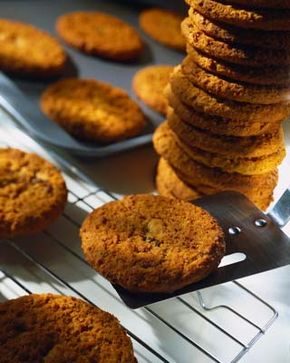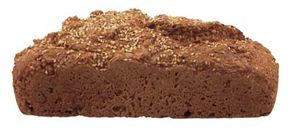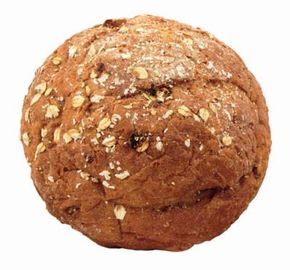Q. I've heard it's important to get a lot of fiber in your diet, but is it possible to get whole grains in baked goods and not just in bread?
There's no doubt about the research: Most of us need to get more fiber into our diets. Although it's not a vitamin or a mineral, fiber plays an important role in keeping the body healthy.
The average American consumes half the amount of fiber experts recommend, only 10 to 13 grams a day of the 20 to 35 grams known to offer protective health benefits.
The fiber found in whole grains helps lower cholesterol, reduces the risk of heart disease, and helps stabilize blood sugar. In addition, it's been shown to reduce the risk of colon cancer.
How to Add Whole-Grain Fiber
To add more whole-grain fiber to your diet, think bread and baked goods. Forget the stereotype of whole grains being only for breads. If you have a variety of whole-grain flours on hand-and know a couple of simple tricks for the best results-you'll soon be baking full-flavored breads and baked goods made with the goodness of whole grains.
To start, stock your pantry with some basics. These should include bread flour, all-purpose flour, whole-wheat flour, whole-wheat pastry flour, and oat flour. Barley flour is another good whole-grain flour that lends a sweet, nutty flavor to baked goods.
Bread flour, all-purpose flour, whole-wheat flour, and whole-wheat pastry flour are available at most supermarkets; oat and barley flour are available at health-food stores. You can easily make your own oat flour by processing rolled oats in a blender or food processor until finely chopped.
Bread flour and all-purpose flour can be stored in airtight containers in a dark, cool place such as a cabinet away from the stove or oven. Because whole-grain flours have a higher fiber, vitamin, and fat content than refined white flours, they should be stored in freezer storage bags in the freezer.
Bring frozen flour to room temperature by setting it out on the counter in a mixing bowl for an hour. For bread baking, heating the flour and bowl slightly in a slow oven before mixing in the dissolved yeast helps get the yeastie beasties off to a very happy start.
Tricks of the Baking Trade
There are two simple tricks to know when adding whole-grain goodness to your baked goods: First, if you're baking bread leavened with yeast, about half of the flour you use will need to contain gluten.
Second, whole-wheat flour, whole-wheat pastry flour, rye flour, oat flour, and barley flour do not contain as much gluten as bread flour and some all-purpose flours, and should be used in combination with gluten-containing flours for best results.
What is Gluten?
Gluten, a starch found in wheat, is necessary in yeasted bread to provide the elasticity and structure that allows bread dough to form bubbles and rise. Bread flour is made from high-gluten hard wheat. (Cake and pastry flour is made from low-gluten soft wheat.)
Baked goods such as cakes, cookies, pie crust, pancakes, quick breads, and muffins that use baking powder and baking soda as leaveners do not depend on gluten and yeast for rising and structure.
Soft flours with less gluten, such as cake flour and whole-wheat pastry flour, and flours with little or no gluten, such as rye, barley, and oat flour, work well in these baked goods. Bread flour, with its higher gluten content, causes cakes, cookies, pie crust, pancakes, quick breads, and muffins to be less tender.
All-Purpose Flour, Cake Flour or Bread Flour?
All-purpose flour is a blend of flours designed to be a compromise between "hard" bread flours and "soft" cake and pastry flours. Generally speaking, all-purpose flour can be used for both bread and cakes, although bread bakers will say that "harder" bread flour is better for chewy, rustic breads, and pastry chefs will prefer to use cake and pastry flours for their baked goods requiring a tender crumb.
All-purpose flour comes bleached or unbleached; each can be used interchangeably. Unbleached flour is aged naturally by time; bleached is aged chemically.
With a little practice, you'll soon find the combination of flours that suits your baking style, be it high-rising bread, tender baked goods, or whole-grain goodness. The great thing about bread warm from the oven is that it tastes good no matter how it turns out, so feel free to experiment getting whole-grain goodness into your loaves and other baked goods.
For more helpful baking tips and hints, see:



